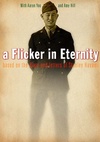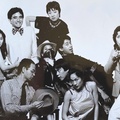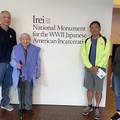With the Congressional Gold Medal ceremony held last week honoring the 100th Infantry, 442nd RCT and MIS in Washington, D.C., it seems appropriate to take a moment to pause and remember all those who are not here to share in the celebration. Besides the many that have died in the years since the war, I am specifically referring to those killed in action. It has been rightly said that those brave men who risked their lives fighting for the country that imprisoned their families brought back honor to all Japanese Americans. Numbers are hard to come by, but it seems that roughly 18,000 Japanese Americans served in the U.S. Armed Forces during WWII, and among the many awards they received, the most telling statistic is perhaps that there were 9,486 Purple Hearts.
It’s not easy to put a number on those Japanese American soldiers who died on the battlefield. I am reminded of Joseph Stalin’s infamous quote, “One man’s death is a tragedy, a million deaths a statistic.” Luckily, we as a community have never become so callous. The importance we have placed on the Congressional Gold Medal is an indication of the respect we continue to give to these men who put up the good fight shouting “go for broke.”
Here’s where I have to offer a confession. Since becoming a JA history novice and sometime activist, I have to admit that over the years I have sided more with the Heart Mountain Resisters and the Tule Lake No-No’s than I have with the 100th/442nd/MIS. It’s not that I would have been a resister myself if asked at that time to serve in the military or sign a loyalty questionnaire, it’s just that I would like to think that in my own rebellious way I would have gone against the norm.
So it is with a bit of irony that my last few months has been spent helping the Go For Broke National Education Center and working on a film about a young boy who served loyally with the 442nd Regimental Combat Team in Italy and France and died protecting his country. Now, to justify my shift in direction is the fact that what originally attracted me to this story was I saw it as an antiwar, anti-unjust government piece. It goes something like this: bright young boy with a promising future ends up being put in camp and then killed in a war fighting for a country that betrayed him twice—first by putting him behind barbed wire and then by drafting him to serve.
This young man named Stanley Hayami kept a beautifully self-illustrated diary and wrote descriptively animated letters while on this tragic journey. Through his own words and drawings, it was unmistakable that the boy showed great promise. He was a bright kid on his way “to the top” (in his words) as an artist and writer. His story put a human face to an awful time when choices were few but hopes lived on. Stanley’s face was particularly suited to this story because he had a smile that could light any room and capture any heart.
What I came to realize is that Stanley was probably like a lot of young men caught in this impossibly difficult situation. First of all, he was only 18 when he had to make this serious life choice. Driven by duty, he also had peer pressure and a desire to follow what felt like the right thing to do. His youth probably also helped him face the ensuing dangers of war with a certain innocent stalwartness. He ended many a letter with “don’t worry about me,” as if he really meant it—even though we will never know how he really felt.
Reading Stanley’s diary and letters, as well as talking to the quiet Nisei heroes at Go For Broke, has broadened my view of the WWII story and made me realize that stories of courage go way beyond people like Fred Korematsu, Gordon Hirabayashi and Frank Emi. Each and every soldier’s story has something to teach us about that life-changing time in our history that shaped our community forever.
When the Nisei veterans were handed the Congressional Gold Medal in Washington, D.C. on November 2, and three days later closer to home, Go For Broke saluted the veterans of all three segregated World War II units at their 10th Annual Evening of Aloha Dinner, I celebrated with a greater understanding of the sacrifices made by these men and their families.
On Saturday, November 12, our film titled A Flicker in Eternity will have its premiere as part of Visual Communications’ ongoing Border Crossings series, at 2 pm at the National Center for the Preservation of Democracy. A nice way to pay tribute to Veteran’s Day, it is free to Japanese American National Museum and Visual Communication members, but everyone is invited with Museum admittance. For more information, contact Visual Communications at info@vconline.org, or (213) 680-4462 or visit www.vconline.org or www.janm.org. It would be an honor to share Stanley’s remarkable story with you.
© 2011 Sharon Yamato







